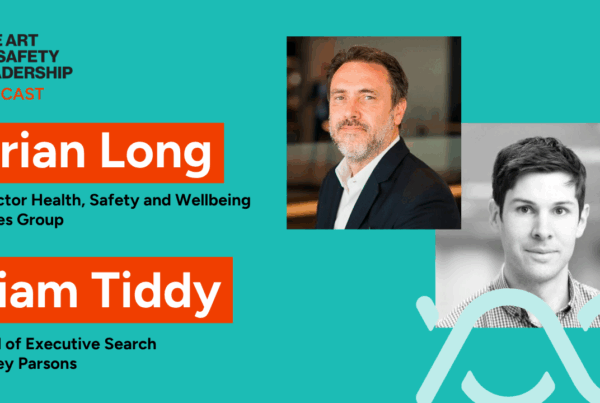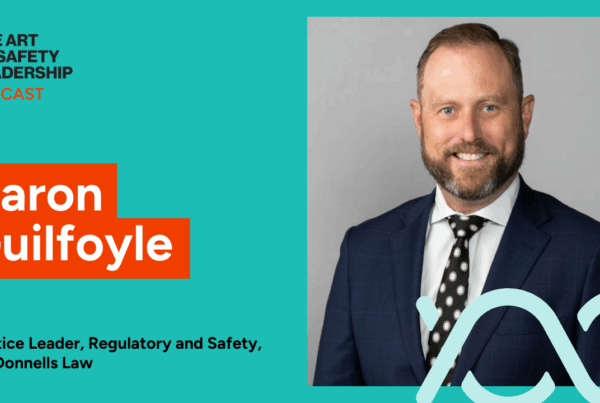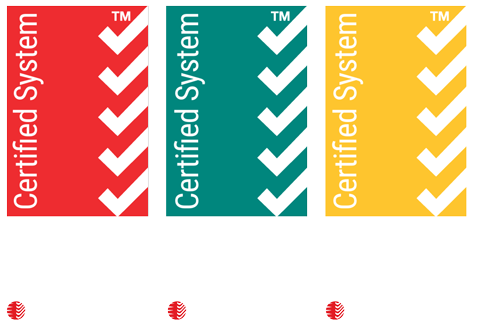As life coach Tony Robbins once said, “energy flows where attention goes”. Cliché? Yes. But the principle holds true when it comes to selecting the most effective health and safety performance indicators for an organisation. Health and safety metrics are a central part of knowing where to focus your efforts and investment, so tracking and leveraging the right data is critical.
I’ve had some really interesting discussions with David Filshe, Head of Health and Safety for Mowi Scotland and Ireland, and Crystal Danbury, Senior Safety Leader in Safety Insurance and Wellbeing on this topic of measuring safety culture.
Together, we’ve shared our insights about:
- the role of leading and lagging safety indicators and why David compares relying on lag indicators to driving using just your rearview mirror
- how regulations are setting the floor and contributing to our ingrained reliance on lag data
- why including more qualitative metrics is important for a balanced scorecard and how that can lead to more mature conversations around safety outcomes
- the challenges around choosing the right indicators to drive desired outcomes
- how combining leading and lagging indicators with narrative can tell a powerful story about the presence of safety in your organisation
- how the way we present our safety KPIs can have a big impact on changing the narrative around safety in the boardroom and the impact that can have on securing investment for safety initiatives.
How safety can be measured: The role of leading and lagging indicators in workplace safety
Traditionally our focus as a health and safety sector has been on lag indicators to inform future safety interventions. Lag indicators are the data we get once harm has occurred, essentially anything that records and measures the impact post-injury for the individual and the business.
Examples of safety lag indicators
- Lost time injury frequency rates (LTIFR)
- Total recordable injury frequency rates (TRIFR)
- Severity rate
- Incident and near miss rates
- Workers’ compensation costs
- Equipment damage costs.
Regulations set the floor, the minimum standard that people need to adhere to in order to protect their workers. As a result, we’ve got this ingrained deficit approach where we’re relying on audit and verification to prove that we’re complying with regulations and lag data to indicate performance of those systems. But you don’t get the gold standard by just doing the minimum.
Lag-derived safety data only provides part of the picture. David Filshe, Head of Health and Safety for Mowi Scotland and Ireland, says lag data is a great explanation of your history, “but it’s not telling you about what’s coming up ahead of you and the risks and challenges you need to prepare for”.
When used in isolation, lag metrics simply don’t give you a complete story about the presence of safety or your safety culture maturity.
The rear-view mirror analogy really reminded me of one of my risk management mentors who frequently and energetically espoused, “track record means nothing”, citing many of the most significant corporate risk management failures in our history.
The challenge is to choose the right health and safety performance metrics to measure and leverage to take us beyond simply complying with regulatory frameworks and provide a true picture around the presence of safety. To do that, we need to take a new view of safety culture measurement.
Organisations need to include lead metrics in their reporting. By including more qualitative indicators and detailing what the workforce is telling them about health and wellbeing in their organisation, they have a much more balanced scorecard.
Leading safety measures are all things a company is doing proactively with their safety systems and processes to prevent harm and improve safety outcomes. Having a picture of this data allows us to understand if the things we are doing to prevent harm are actually making a difference.
Examples of safety lead indicators
- Monitoring risk control and risk assurance data
- Understanding your operations and learning insights
- Knowing your people and their knowledge
- Safety culture and climate metrics
- Where you are with legal compliance and self-determined standards
- Ensuring adequate resources are in place to manage risk
- Effective verification
Whatever leading and lagging indicators you’re using, understanding the trends and correlation between the different data sets is key. If that correlation isn’t what you were expecting, that’s when you need to stay curious and dive into the data to ask why – what are the leading indicators telling us and are they translating into the reduction of lag indicators? If they’re not, you’ve got a problem.
Why combining the right safety metrics with narrative is key to driving behaviour change
David from Mowi says safety needs to stand back and really question what it is we’re measuring. “Choosing the wrong metrics drives the wrong behaviour.”
“You can’t drive overall organisational success on lag metrics. The reality is that we won’t get away from lag metrics as they tell a story about your history, but reducing lag indicators shouldn’t be the barometer of success and shouldn’t be the guiding factor for what we need to do as an organisation.”
“Yes, businesses have made inroads in including more leading indicators, but they can still create a negative outcome if used in the wrong way. I’ve seen businesses put lead indicators in place for it to end up becoming a tick box exercise – have we done training, yes or no. We’ve become obsessed with building accountability for task completion, either within safety teams or operational teams completing elements of safety. And what we get is people believing that the data’s telling you something, but all it’s saying is that we’ve completed an activity, it’s not telling you anything at all about the safety of your business or how effective you’ve been at risk.
We need to be measuring the outcome of the processes and methods being used, not just the completion of tasks.
Fundamentally, data doesn’t give you answers. It doesn’t tell you what to do and what not to do, what it does is give you potential areas to probe further and understand. Leading indicators should stimulate curiosity to dive deeper into a subject and understand it further.
As much as we’re using data to drive more foresight into what we need to do, the critical part, and what’s made a difference for us at Mowi in understanding the realities on the ground and a deeper interlinked understanding of good performance and operation, is the narrative. It’s the focus groups, going out onto site and discussing the challenges of improvements, seeing the variants between different teams or locations and understanding why that’s the case. The change needed is never going to be a data point. Combining lagging and leading safety metrics with narrative provides a really powerful story.
Leading safety indicators need to be far more business language orientated and far more aligned to other non-safety-based business metrics. If we move in that direction with valuable data, supported by narrative, I think there’s an opportunity in the safety world to make big inroads,” says David.
Make no doubt about it, safety can be complex and technical. But storytelling is a technique that can help simplify the complex and make it simple, take the technical and make engaging, and provide something that Board members can not only relate to, but take action on.
At a very simplistic level, much of the work we do to improve safety is focused on communicating with and influencing humans.
Systems are important as a foundation, but people are the connective tissue that applies them and makes any organisation perform.
There is a strong history and culture in the sector of sharing ‘war stories’ as part of training and development activities. When done well it includes salient tales of cases where we had got things wrong, imprinting these lessons and creating memory slides for the next generation of leaders, and helping drive improvement over time. But the narrative doesn’t have to be focused on the negative. Sharing the stories of those that have gone right, particularly in challenging circumstances, is such a powerful tool to role model the right behaviours, attitudes and values to others.
How smart metric selection can change the narrative around safety with the C-Suite and Board
I regularly read commentary and studies from the health and safety professional community questioning why safety is regularly so far down the list of board priorities. Having sat on boards, I tend to wonder whether the communication style, framing and focus of safety reports just isn’t hitting the right chords to pique the interest of directors and influence them to realise this is a subject that requires their attention and support.
If we want to move the conversation around the boardroom table, we need to reframe safety as a commercial proposition. Ensuring we’re measuring and leveraging the right health and safety performance indicators will shift the focus from ticking boxes for compliance to driving behaviours, attitudes and investment towards proactive safety culture.
One of the problems with getting traction for safety initiatives is the way we present safety KPIs. Dense dashboards and reports with too much data can inhibit the conversation we actually want to be having and people can get bogged down in the weeds. Presenting data in a way that’s more easily consumed and interpreted is the big trick. Crystal Danbury, Senior Safety Leader in Safety Insurance and Wellbeing says we need to stop talking about 100+ KPIs.
“We need to stop being comforted by presenting massive reports in meetings and start talking about the boiled down impact on people,” Crystal says.
“When other business unit leaders present to the board they engage really differently to how safety leaders do. We’re starting to understand that we can’t be the only profession to arrogantly walk into a boardroom and not articulate anything past ‘you should do this because it’s the right thing to do’. As safety leaders, we don’t talk about safety in the same way that every other leader in our organisation is measured. I think that’s the fundamental breakdown of why we don’t get investment, we’re not turning up like all of our peers to showcase the true cost of harm in our organisations and the business case that exists to both reduce harm and improve business efficiency
One of the problems is the way we present our safety KPIs. If we think about the material we typically provide to boards it’s a data dense report. We surround ourselves with a lot of safety data, but of all those statistics you have at your fingertips, what really do you need to talk to the board about?
Let’s start thinking about what are the metrics that are going to generate probing questions or start the best conversation. To generate different, better questions, we need to reframe our data in a different way,” she says.
“We’re not having that discussion because we’re not talking about the true cost of harm and that’s because we’re not looking at it as a true cost. For me, it’s really fundamental to understand what harm costs your organisation so you can talk about loss before you ask for what you need. Do you know your P&L and how much of that is wasted because you don’t have people on the ground?“
Crystal recommends going away and mining your data to come up with your three top types of harm events for the month. “Then translate each event to the bottom line impact. Break it down into the true cost of harm – demonstrate the loss, demonstrate where we are right now, demonstrate how this thing I’m suggesting will fix your problems. You have to make $x to pay for these types of injuries that happened this month. The board is quickly going to determine if they’re bothered or not.”
“If you’re a safety professional trying to get into the boardroom and you can see that there’s so much more to be gained, start to put monetisation figures against your safety data and interventions to tell the ROI story, exactly how the marketing or sales teams would present it to the board. So change the data game, get inside your safety metrics, and unlock the information,” says Crystal.
You can hear more from Crystal on the true cost of harm here in her latest webinar on the topic.
What are your thoughts on how we leverage the health and safety data we collect? Do you have your own stories on shifting the conversation by changing what you measure? Share your insights with us in the Safety Leaders’ Forum on LinkedIn.
 About Anthony Bradstreet
About Anthony Bradstreet
For over a decade, Anthony has been supporting organisations to better understand, apply and measure risk, health and safety across geographies, sectors and business units. As Safe365’s Chief Customer Officer, Anthony ensures Safe365 customers get the best experience to improve and unlock the power of our health and safety technology.






